【ICTM国际专题研讨会】丝路上的鼓与鼓乐: 历史、图像与表演(技巧)

时间:2020年11月
地点:上海音乐学院

丝绸之路已两度成为国际传统音乐学会(ICTM)系列专题研讨会的重要主题(丝绸之路上的抱弹类鲁特,2016.10;丝绸之路上的复合簧管乐器,2018.11)。这次研讨会将探讨古丝绸之路、茶马古道、海上丝绸之路、毛皮之路沿途的各类鼓与鼓乐。它们不仅是贸易通道沿线文化交流的重要内容,也反映了当地独具一格的地域特色。希望此次活动能进一步完善有关古代音乐发展历程的重要知识,因为它们对当下的文化活动仍存在深远影响。
人们对鼓的兴趣不仅局限于乐器本身,更在于鼓乐合奏的使用语境和基于诸多目的的乐器制作与作品。从古至今,鼓与鼓乐合奏一直与军事行动紧密相连,对于地处贸易通道和及其重要枢纽周边的文化而言具有重要意义。但在中国,在这些贸易通道的沿线地区中,多种多样的鼓乐器、鼓乐合奏以及鼓乐表演传统也是非军事活动发展的结果。一个重要特征是鼓与鼓乐合奏和身体律动、舞蹈及戏剧之间的固定关联。此外,鼓与鼓乐合奏在形形色色的传统仪式和宗教习俗中的角色同样引人注目。
我们可以看到由贸易时代流传至今的各色鼓乐器,例如纳亚里特(nayarit)和塔莎(tassa)类型的腔体鼓,及由圆柱形鼓和圆锥形双面鼓组成的套鼓,用于为队列行进伴奏。此外还有定音套鼓,以及印度斯坦风格的塔布拉鼓演奏和传统仪式上演奏的陶瓷沙漏型乐鼓。除了用鼓槌或徒手演奏的鼓与鼓乐合奏,我们还能一定程度上通过其演奏方式推断演奏者的性别和年龄段。敦煌石窟中关于鼓的壁画多达500余幅。最后,鼓还是重要的指示性乐器,不仅在传统和现代各音乐类型中发挥着标记节拍和韵律结构的作用,往往还被用以弥合更大的空隙。这方面的许多问题仍有待解答,而相关的各国历史及现代文献,以及声音、图片、视听资料的数量都在不断增加。
鉴于此,针对当前鼓乐演奏更为严谨的分析方法应被给予充分关注。通过学术探讨、最新研究成果展示和现场表演的结合,可以高效地确保该议题的丰富性和知识现状。
当然,要回答这诸多方面的问题并非易事。但考虑到其对演奏技巧的贡献、在公共场合的应用、以及其象征意义,对这一方面的细节展开深入研究具有很大价值。此次研讨会将展示当前音乐背景下各地区不同时期鼓与鼓乐合奏的现场表演。通过学术成果展示和体验音乐演奏,参会学者将尝试克服过去几十年形成的先入之见,并激发有利于未来研究的新认识。同时,表演者可以更好地了解他们的音乐是如何呈现给特定听众、以及如何被学者诠释的。通过让杰出学者和演奏家们齐聚一堂,我们可以更好的弥合理论、迷思、愿景和既有文化实践之间的鸿沟。
本次会议主题暂定为:
1.鼓与鼓乐合奏的历史,及其在各个社会不同阶段与特定文化资产、价值观的关系
2. 石窟壁画和雕塑中的鼓图像及其图像学研究
3. 在不同合奏背景中,鼓的生态学特征、演奏技巧、表演技艺之间的关系
4. 丝绸之路沿线地区人们日常生活和传统仪式中鼓与鼓乐合奏的文化用途
5. 丝绸之路沿线相互关联的群体中,鼓与鼓乐合奏的演奏技巧及声音审美在当代音乐实践中的发展
根据国际传统音乐学会专题研讨会指南,欢迎致力于鼓与鼓乐合奏研究的各国及各学科学者参会并分享专业知识。
会议规模将邀请来自不同国家和地区的20-25名学者
会议时间
2020年11月底(暂定)
会议地点
中国·上海·上海音乐学院
会议语言
英语为主,中文为辅。地方委员会将提供同声传译。

Drums and Drum Ensembles of the Silk Road: Histories, iconology and Performance Skills
The Silk Road was already twice an important topic in the history of ICTM colloquia. This time, the various drum and drum ensembles that were part of cultural exchanges and local uniqueness along the Classical Silk Road, Ancient Tea Route, the Maritime Silk Road, and the Fur Road, may shape a further step in completing some significant knowledge about processes in musical developments of past times which still have an enormous impact on present cultural practices.
It is of generalinteresttonotonlyseesingle instruments but the context of their use in ensembles and their production in sets for a wide array of different purposes. Drums and drum ensembles shape a tradition that was and still is closely related to military actions which were of concern to many cultures in the proximity to trade routes and along significant contact points between them. Yet China’s diversity of drums and drum ensembles as well as drum playing traditions in all connected regions are also a result of developing non-military purposes. One important feature istheconfinedlinkof drum and drum ensembles to body movements, dance, and drama. Another point of interest are the diverse rituals and religious practices that include the use of drums and drum ensembles.
Drums of all kinds found their way through the times of trade such as the kettle drums of the naqarit or tasa type, the sets of cylindrical and double conical drums played during processions, or the tuned drum circles and the Hindustani way of playing tabla, the porcelain hourglass drums play in the rituals. It seems that drums and drum ensembles either played with mallets or hands, were also indicative for music practices across gender and age groups. There are more then 500 images in Dunhuang Grottoes. Finally, drums are crucial as signalling
instruments that not only mark meter and rhythmic structures of traditional and contemporary music genres, but are often used to bridge larger distances. Many questions in this regard are yet to be answered studying historical and recent literature in various languages, sound, and images, audiovisual sources that are already available in an increasing number.
In this context, a closer and far more analytical view on current drumming practices should be given due attention. The amalgamation of scholarly discussions, the presentation of most recent research, and theimmediateperformancehaveto ensure a highly effective addition to the current state of knowledge about the topic.
Again, it may look difficult to answer the many questions arising from the diverse perspectives drafted here, but it isworthtolookdeeperinto details that contributed to present performance skills, their applications in communal settings and their symbolic meanings. The colloquium will include live music performances featuring drums and drum ensembles from diverse regions, communities, and periods in their present musical contexts. When participants experience both academic presentations and musical performances, scholars can overcome preconceptions formed over the past decades and develop new understandings that can lead to a more effective research, while performers can get a better sense of how their music is presented to their specific audiences and interpreted by scholars. Bringing together a number of distinguished scholars and performers will help bridge the gap between theories, myths, visions, and existing cultural practices.
The envisioned thematic frames include:
1. History of drums and drum ensembles and their relation to specific cultural assets and values in different societies and at different times
2. Iconology and iconography on grottoes murals, sculpture of drum.
3. The correlation between ecological characteristics of drums, playing techniques, and performance skills in various ensemble contexts
4. Drums and drum ensembles and their cultural use in daily life as well as in rituals of people connected to the Great Silk Road
5. Performance skills and the development of sound aesthetics in contemporary music practices with drums and drum ensembles among people interconnected across regions of the Great Silk Road
In accordance with the ICTM’s guidelines for Colloquia, all participants - scholars from different countries and disciplines with research focus on drums and drum ensembles of the Silk Road - are welcome to share their expertise.
Colloquium size
20-25 scholars from various countries and regions will be invited.
Colloquium date
Late November 2020 (dates will be finalized by April 2020)
Colloquium site
Shanghai Conservatory of Music, Shanghai, China.
Colloquium language
English, with Chinese as auxiliary languages. Simultaneous interpretation will be provided by the LAC.
Program Committee
Xiao Mei (China)
Don Niles (Papua New Guinea)
Gisa Jähnichen (Germany/China)
Zhao Weiping(China)
Timkehet Teffera (Germany/Ethiopia)
Joao Carvalho (Portugal)
Tan Shzr Ee (UK)
敬请期待!



